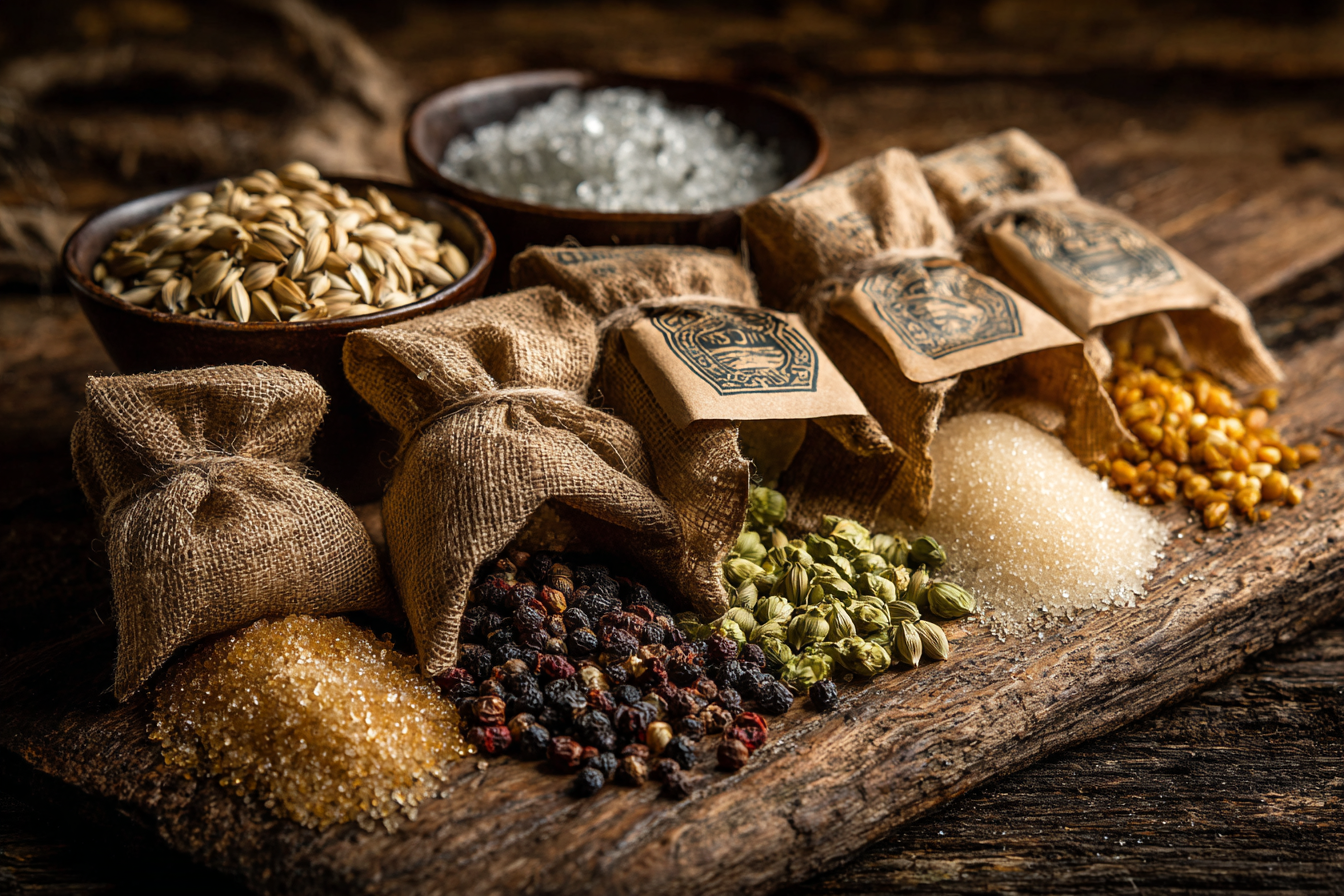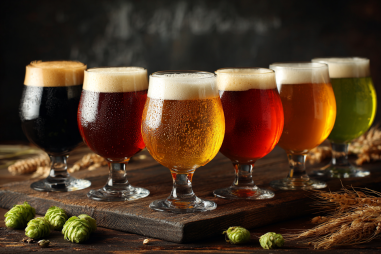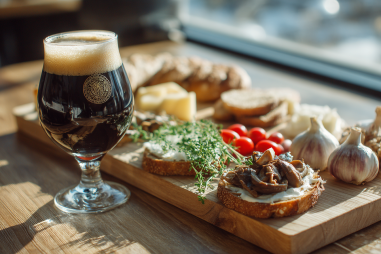American Blond Ale is a beloved style that captures the essence of balance and drinkability. With a moderate malt backbone, subtle hop presence, and a clean yeast profile, this beer offers a refreshing option for brewers and drinkers alike. To craft a successful American Blond Ale, understanding the fundamental ingredients is crucial. Each component — from the base malts to the yeast strain — shapes the beer’s flavor, aroma, appearance, and mouthfeel. Whether you’re a homebrewer or simply curious about what goes into this approachable ale, let’s explore the key brewing ingredients that define the American Blond Ale.
Overview of American Blond Ale Style Requirements
The American Blond Ale style is known for its well-balanced, approachable character. It typically presents a light to medium body, with a clean malt sweetness and restrained hop bitterness. The color usually ranges from pale gold to deep amber, offering a clear and bright appearance. Alcohol content sits comfortably around 4.5% to 6% ABV, making it a sessionable yet flavorful option.
Flavor-wise, American Blond Ales are easy-drinking with subtle layers of malt sweetness and light fruity esters. Hop bitterness is noticeable but not overwhelming, often providing refreshing herbal or citrus notes. Overall, the style emphasizes subtlety and harmony among the ingredients rather than aggressive flavors.
Base Malts Used: Pale Malt and Pilsner Malt
The foundation of any great American Blond Ale starts with the base malts. The most common choices are pale malt and pilsner malt. Pale malt is the workhorse of many American ales, offering a clean, slightly sweet, and grainy flavor character. It provides a solid malt backbone while allowing other ingredients to shine through.
Pilsner malt, on the other hand, contributes a lighter color and a slightly crisper, bready flavor. Combining pale malt with pilsner malt can add complexity to the malt profile while keeping the color bright and inviting. Both malts mellow nicely, giving the beer a smooth drinkability characteristic of the style.
Specialty Malts: Carafoam and Crystal
To enhance the complexity and mouthfeel of the American Blond Ale, brewers often incorporate specialty malts. Carafoam is a popular choice for adding body and head retention without overly darkening the beer. It imparts subtle sweetness and contributes to a creamy texture in the finished product.
Crystal malts, available in a range of color intensities, add varying degrees of caramel sweetness and color depth. Light crystal malts can bring gentle toffee notes and enhance the beer’s amber hue. Used sparingly, specialty malts help balance the pale malt’s sweetness with a touch of richness and complexity, without overpowering the delicate profile expected from a blond ale.
Hops Selection: Common Varieties and Their Effects
Hops in an American Blond Ale provide balance, aroma, and sometimes subtle flavor complexity. They are typically medium low in bitterness to avoid overpowering the malt. Popular hop varieties include Cascade, Willamette, Centennial, and Citra, each bringing unique characteristics.
- Cascade: Known for its floral, citrusy, and grapefruit notes, Cascade is a classic choice that adds bright, refreshing aromatics.
- Willamette: Offers earthy and mild spicy tones, with moderate bitterness that complements malt sweetness.
- Centennial: Sometimes called a “super Cascade,” it brings more intense citrus and floral qualities, adding vibrancy and a touch of bitterness.
- Citra: Provides lively tropical fruit, citrus, and floral aromas, ideal for imparting a modern hop character.
These hops can be used in various combinations and timing during the boil or dry hopping phase to adjust bitterness and aromatic intensity. The goal is to achieve a clean bitterness and pleasant hop aroma that enhances the beer’s refreshing profile.
Yeast Strains Popular for Blond Ales
Yeast selection is essential in defining the flavor profile of an American Blond Ale. Most brewers prefer clean-fermenting ale yeast strains that promote subtle fruity esters without adding overwhelming phenolic or spicy notes.
Common yeast strains include:
- American Ale Yeasts (such as Wyeast 1056 or Safale US-05): These strains are highly popular for their clean, neutral profile, allowing malt and hops to be the stars.
- California Ale Yeasts: Very similar to American Ale strains, they provide crisp finish and moderate ester production.
- Belgian Blond Ale Yeasts (used cautiously): Sometimes homebrewers experiment with Belgian yeast strains to add subtle fruity and spicy complexity, but this is less traditional in American Blonde Ales.
Ultimately, the yeast should ferment cleanly at moderate temperatures (around 65-70°F) to preserve the beer’s drinkability and crisp finish.
Water Profile Considerations
Water chemistry plays a subtle yet vital role in brewing an American Blond Ale. Generally, a balanced water profile with moderate hardness and sulfate-to-chloride ratio helps highlight both malt sweetness and hop bitterness.
A classic American blonde ale water profile might target:
- Moderate sulfate levels (to enhance hop bitterness without harshness)
- Moderate chloride levels (to enhance malt sweetness and body)
- Neutral pH (around 5.2-5.5 during mash)
Adjusting water profiles with brewing salts like gypsum and calcium chloride can help brewers tailor the final flavor and mouthfeel. Many brewers start with clean, soft water and then add minerals as needed to replicate an ideal balance.
Optional Ingredients and Adjuncts
While traditional American Blond Ales rely mostly on malt, hops, yeast, and water, some brewers incorporate adjuncts and optional ingredients to tweak flavor or improve mouthfeel.
- Adjunct grains: Small amounts of flaked maize or rice can lighten body and enhance drinkability.
- Honey or sugar: Used sparingly to boost fermentable sugars without adding heaviness.
- Herbs and spices: Occasionally, subtle additions like orange peel or coriander can brighten aroma but should be used carefully.
- Fruit adjuncts: Some experimental brews add light fruit notes, although this isn’t traditional for the style.
These adjuncts offer creative flexibility but are optional, and most American Blond Ales shine through simplicity in their ingredient list.
How Ingredient Choices Affect Flavor and Color
The delicate interplay of malts, hops, yeast, and water defines the overall character of an American Blond Ale. The base malt selection largely determines the beer’s color and foundational sweetness. Light base malts and pilsner malt keep the beer bright and golden, while specialty malts like carafoam and crystal add subtle complexity and depth of color.
Hop varieties and dosing influence bitterness and aromatic profile. Choosing floral or citrus-forward American hops adds refreshing notes and balances malt sweetness, while too much hop bitterness can overshadow the style’s hallmark smoothness.
Yeast impacts everything from ester production to attenuation. A clean yeast strain ensures that malt and hops shine, while more expressive yeasts might add fruity esters or spice, pushing the beer away from the traditional blond ale profile.
Finally, water chemistry influences how malt sweetness and hop bitterness are perceived. Modifying mineral content can create a softer or more crisp mouthfeel, impacting the drinkability of the beer.
By thoughtfully selecting and balancing these ingredients, brewers can craft an American Blond Ale that is harmonious, refreshing, and true to style.
Embracing the Art of Brewing Your American Blond Ale
Creating an American Blond Ale is a rewarding journey into balance and subtlety. Starting with quality base malts like pale and pilsner malt sets a smooth foundation, while specialty malts add dimension and texture. Choosing the right hops brings refreshing aromas and mild bitterness without overwhelming the palate. Selecting a clean yeast strain and paying attention to water chemistry completes the brewing puzzle.
Whether you’re brewing your very first batch or refining your recipe, understanding the ingredients’ roles empowers you to create a well-rounded and delicious American Blond Ale. With patience, experimentation, and an appreciation for the nuances of each component, you’ll be well on your way to crafting a beer that’s both satisfying and refreshing—a true celebration of this versatile and beloved style.







